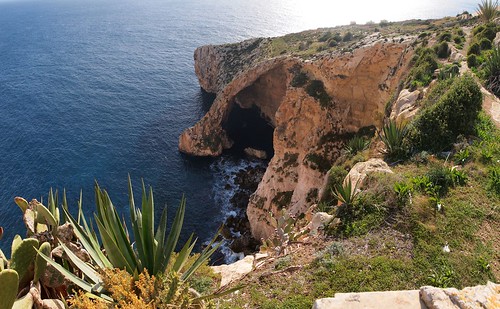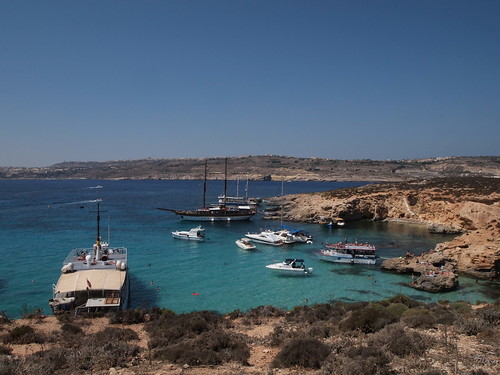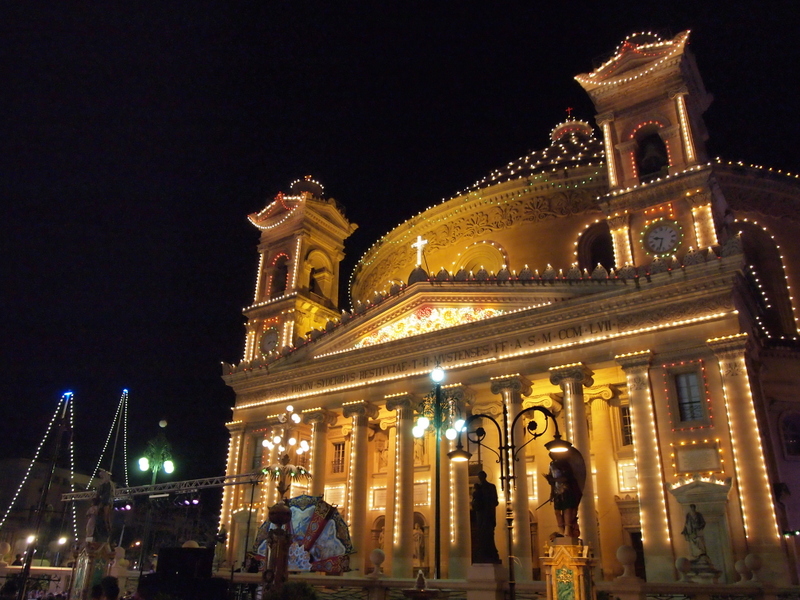How and where to start?
Malta... its pedigree is shown instantly because of its people's language, with Semitic origins, closer today to northern western African Arabic and Hebrew with layer over layer of several other languages their strongly Mediterranean culture, as a kaleidoscope of several others, and their historical landscape. From Phoenicians traces, Roman houses and a intense period of gothic architecture that revamped all the rest and it will make you wonder where the Renaissance and the enlightenment periods were.And then reaching the 19th and 20th centuries under heavily English influence.
To finally do a turn and you reach the temples.
Aaaah! Ohhh! Wow!
Those temples are literally jaw dropping! When you read that the predated the Egyptian pyramids by thousands of years, it is literally mind-blowing.
Think about this: these are Stonehenge type of structures, but far far more complex, not as big as the Egyptian earliest pyramids, though big enough for a civilization 5000 years old that was pretty much alive and doing well in those 3 small rocks. To build complex and big structures you need a state type of organization, pull resources from everywhere, conquest other nearby peoples and commerce with others farther away. Well there is nothing of that in any record. Whoever built them they were gone long before the Phoenicians arrived, and they left no written records.
So, where you can start your tour of the Maltese islands? Traveling back 6000 years back, or jumping into today frenzy of modern discos, or going to medieval times, to the gothic, or just relaxing in the labyrinthine cities, sipping a good capuccino with a traditional ftira, tasting Maltese wine, or being happy with the traditional Maltese pastizzi!
I will try to split by areas of interest. First...
Malta or Gozo?
It nails downs to flipping the coin: or Malta or Gozo island. Do you want to have access to all, but very important to some sandy beaches and nightlife? Malta is the choice. Sandy beaches, but very quiet small towns: Gozo. Take in consideration that Luqa airport is situated in Malta, and to go to Gozo you have to drive up North to Cirkewa and take the ferry and then keep driving wherever is your final destination in nappy Gozo. It will take 2 hours minimum, maybe 2 and a half. Is this your first time in the island and driving with no guide? Plan for 3 hours and getting lost.How can it be that long if I tell you that these islands are so small? That’s the particular topology of Malta and a topic for another post…
Malta island - where to stay?
- If you want to enjoy some night life close to your place, your better options are cities like St Julians, Sliema and Pembroke (in the limit with St Julians). You can choose from 5 star hotels (Intercontinental in Pembroke, Meridien in St Julians, also you can find the Hyatt and Hilton). Also you can find holiday apartments, check www.holidaylettings.co.uk for offers and options. Then you have a range of bed and breakfast everywhere.
- Another "beach” and “night life” option is to stay in the area of St Paul/Bugiba/Qawra, half way north and in the east of the island. Hotels, holiday apartments and bed & breakfasts. This area is cheaper than St Julians/Sliema/Pembroke.
If night life is not your plan and yes for sandy beaches better head to Mellieħa Bay beach or Golden Bay beach or Għajn Tuffieha Beach . You can stay in the cities nearby, or you have the options for hotels next to the beach.
For Mellieħa Bay, you just can stay at the Mellieħa Holiday Centre , or search for a guest house or hotel in the city nearby : Mellieħa
Golden Bay and and Għajn Tuffieha beaches are located in the west side of the island. Both are just walking distance. And a little farther to the south you can find the little sandy beach of Gnejna Bay. You can walk from Gnejna to Golden Bay next to the sea climbing the cliffs a little bit: one of the many hiking tracks of Malta! If you go out of peak season (June-August), you can think that the world is far far away, and you are walking in an isolated place.
You can chose the stay at one of the hotels near Golden Bay (the Radisson for example) or in a guest house in Mgarr, where you can find the typical traditional maltese house of character, or a farm place.
Valletta is an example of occidental modern city. A big difference between new world towns against old world ones is the square layout of the new, versus the circular, diagonal, labyrinthine layout of old world cities. Valletta built after the Grand Siege of 1565, was designed from the ground up, and using modern standards: square blocks, public spaces, buildings and sewers, and of course defensive walls. Following that defense walls and the history of that period, you can drive, cross the bay in boat, or walk south to the 3 cities, also heavily defended, and see the difference by yourself!
The 3 cities and Valletta are a combination of old style, history, museums and an immersion into the time that the knights arrived and a glimpse to the 2 sieges of Malta: the one in 1565 and the WWII bombardment of the island. Even if you decide not to stay there, you have to plan for a full day in Valletta, including a night strolling, and the 3 cities: take your time to walk and plan which museums you want to visit. Or plan to do both areas following an historical time line:
- Visiting them during the Knight's time
- Visiting them during the WWII siege
 |
| Mosta Festivities |
 |
| Rabat catacombs |
 |
| Rabat |
From historical re-enactments, carnival, the Malta International Fireworks Festival, to many cultural events happening in Valletta: Notte Bianca, International Arts Festival, and also a Fashion Week and many more. A good reason to chose Valletta as the European Capital of Culture for 2018.















































